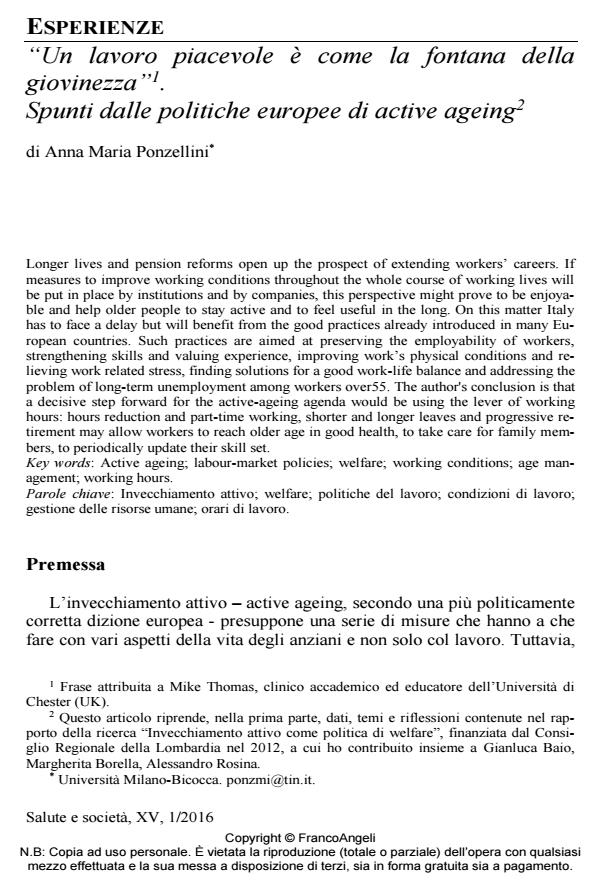"Un lavoro piacevole è come la fontana della giovinezza". Spunti dalle politiche europee di active ageing
Titolo Rivista SALUTE E SOCIETÀ
Autori/Curatori Anna Maria Ponzellini
Anno di pubblicazione 2015 Fascicolo 2016/1
Lingua Italiano Numero pagine 17 P. 99-115 Dimensione file 528 KB
DOI 10.3280/SES2016-001008
Il DOI è il codice a barre della proprietà intellettuale: per saperne di più
clicca qui
Qui sotto puoi vedere in anteprima la prima pagina di questo articolo.
Se questo articolo ti interessa, lo puoi acquistare (e scaricare in formato pdf) seguendo le facili indicazioni per acquistare il download credit. Acquista Download Credits per scaricare questo Articolo in formato PDF

FrancoAngeli è membro della Publishers International Linking Association, Inc (PILA)associazione indipendente e non profit per facilitare (attraverso i servizi tecnologici implementati da CrossRef.org) l’accesso degli studiosi ai contenuti digitali nelle pubblicazioni professionali e scientifiche
Longer lives and pension reforms open up the prospect of extending workers’ careers. If measures to improve working conditions throughout the whole course of working lives will be put in place by institutions and by companies, this perspective might prove to be enjoyable and help older people to stay active and to feel useful in the long. On this matter Italy has to face a delay but will benefit from the good practices already introduced in many European countries. Such practices are aimed at preserving the employability of workers, strengthening skills and valuing experience, improving work’s physical conditions and relieving work related stress, finding solutions for a good work-life balance and addressing the problem of long-term unemployment among workers over55. The author's conclusion is that a decisive step forward for the active-ageing agenda would be using the lever of working hours: hours reduction and part-time working, shorter and longer leaves and progressive retirement may allow workers to reach older age in good health, to take care for family members, to periodically update their skill set.
Parole chiave:Invecchiamento attivo; welfare; politiche del lavoro; condizioni di lavoro; gestione delle risorse umane; orari di lavoro.
Anna Maria Ponzellini, "Un lavoro piacevole è come la fontana della giovinezza". Spunti dalle politiche europee di active ageing in "SALUTE E SOCIETÀ" 1/2016, pp 99-115, DOI: 10.3280/SES2016-001008